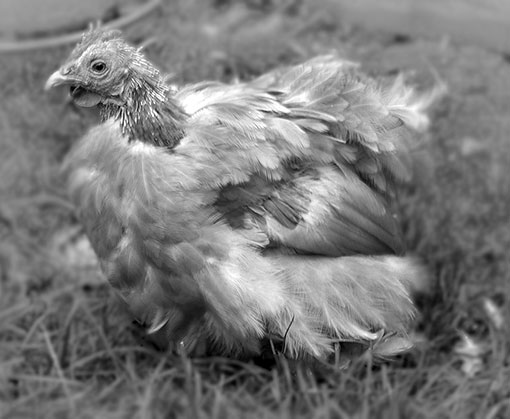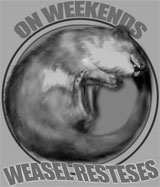Pitiful.

This woeful beastie is Mapp Chicken, today. I really should have snapped a photo a couple of days ago — you can see here, the pinfeathers are already well grown on her neck. Monday, her neck was as nekkid as an oven-ready broiler.
And her tail! Just a sad nub of pink flesh (that thing we call the Preacher’s Nose and the Brits call the Parson’s Nose – or is it the other way around?).
Reminder: Mapp as she was meant to be. Sexy, sexy bird.
Molting is triggered by the first cold snap. It signals chickens to stop laying eggs, drop their feathers and divert all the protein they would have devoted to egg-laying into feather-building. It means they’re all fully feathered up and cozy by the time the real cold weather hits.
But it also means they face the first cold of the season part naked with uncomfortable quills sticking out of their tender places. They’re cranky as shit.
Which birds molt and how completely is affected by a variety of factors. It’s a rule of thumb that the better the layer, the more quickly and thoroughly the molt. Commercial layers — the kind bred to lay an egg a day for the first year — apparently lose them all at once, overnight. You go down in the morning and find a coop full of feathers and a bunch of joke shop rubber chickens on the perch.
Think of that, and this picture when you see photos of ‘abused’ birds from factory farms — this is what even a pampered family pet looks like during a partial molt.
Good weekend, and keep yer feathers on!
October 21, 2016 — 7:39 pm
Comments: 14












